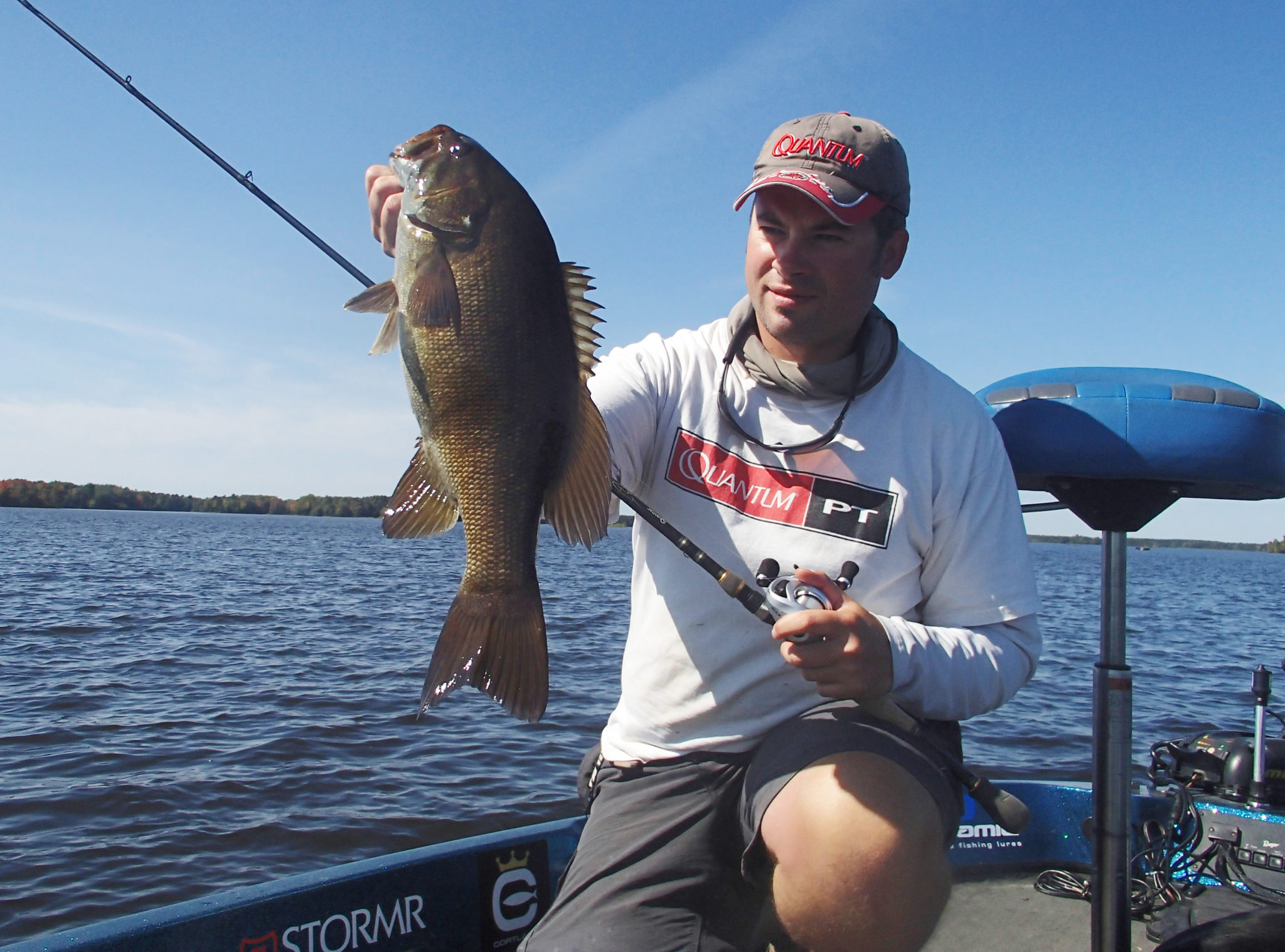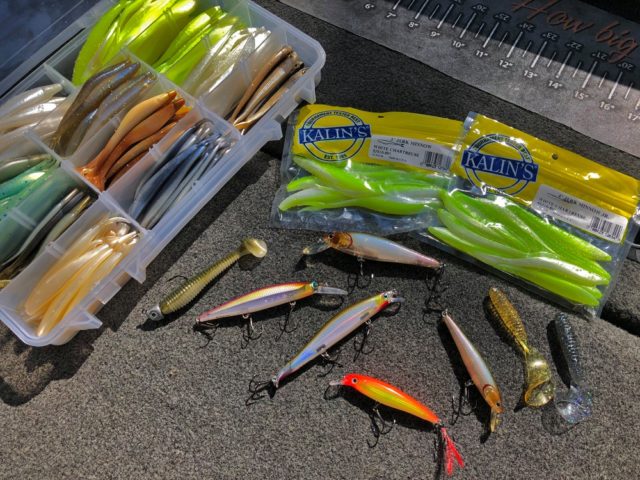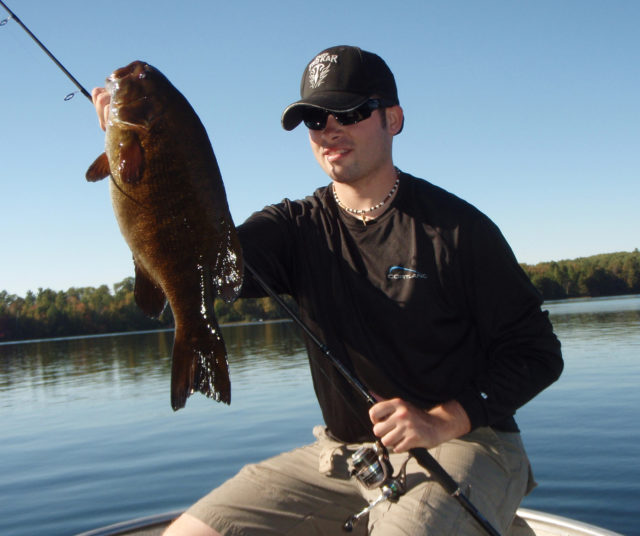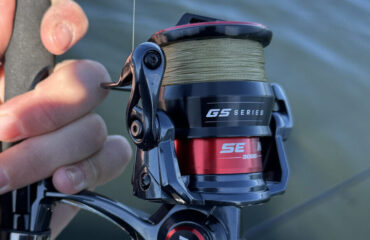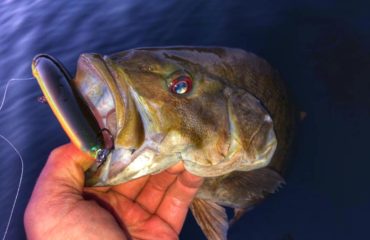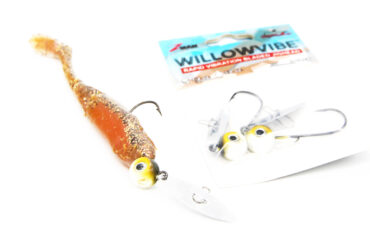Indian Summer Smallmouth
The stage is set for early fall. Big bass bonanzas are on the minds of anglers who are planning late season smallmouth trips. Upon making final arrangements and departure, a week of incoming warming weather is on the long-range forecast. Water temperatures that should be cooling into the upper 50’s for high’s will be climbing back northward towards the 70’s by end of the week, surely disrupting fish activity and delaying autumn’s advancement.
Oh no, and what to do! Should I stay or should I go? It’s a serious question bass anglers ponder when on the verge of coming head-on with this unusual, unseasonable, disruptive weather. Making matters even more challenging, it overlaps another seasonal constant – the shortening of daylight hours. Warming waters in autumn can wreak havoc to the fishery and certain species such as muskies and walleyes, but its positives will outweigh the negatives when the focus is on smallmouth bass.
Viewed as a detriment to fall fishing and the pursuit of many fish species, there is no other fall weather phenomenon that positively and uniquely affects big smallmouth bass like Indian summer does.
Cooling weather in early fall undoubtedly triggers rapid and robust fish activity, making smallmouth behavior and their locations predictable. Good, stable weather during any time of the year can provide the same results too. Warming weather and high-pressure systems in early autumn drives big bass to revisit the shallows for one last time of the year, making smallmouth feeding and locations even more predictable until turnover time begins.
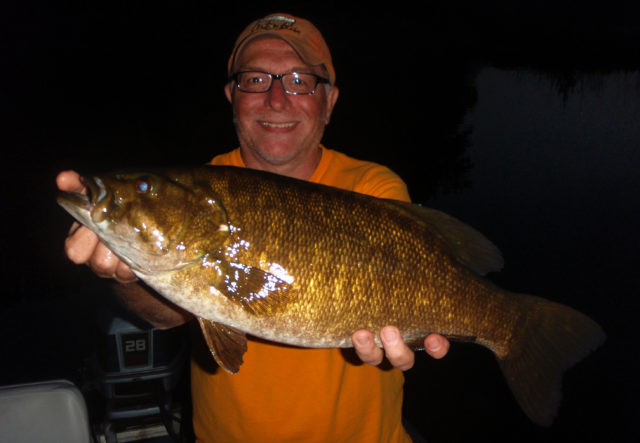
Author’s friend and fishing partner, Mike Piorkowski, with his personal best 22 incher that was caught and released after dark on a late September Indian Summer period.
Defining Indian Summer
Indian summer is a weather phenomenon, described as a late season warm-up comprised of mostly calm and sunny conditions with above average temperatures. The weather pattern can last upwards of 1 to 2 weeks. It can happen in September, October, or in some cases November. Most years in Wisconsin’s Northwoods, it comes during the last week of September, often making this specific week through the first days of October one of the best trophy fish windows of the year.
By late September, water temperatures are on a gradual cool down. But Indian summer reverses the course. Water temps that should be around 60 degrees and cooling steady at this time warms back towards 70 as a result of warm daytime temperatures and calm, sunny conditions.
These warming water temps are prone to scattering smallmouth throughout the lake, but it will revert them back into summer mode where big fish will visit the shallows one last time this season. When this big fish window establishes, seasonal patterns for smallmouth become extended and big fish predictable to locate.
Warming weather creates spikes in activity level and movements we normally wouldn’t see this time of year. Afternoons bring windows of high feeding activity. So too will evenings and sunset where smallmouth feed and can become catchable after dark. Late season bug hatches reappear, and minnows and crayfish follow suit.
Indian summer periods don’t happen every September or October, but when the largest and longest high-pressure systems stall across the upper Midwest, the consistent repetitive weather and conditions makes smallmouth vulnerable and very easy to pattern, especially if it occurs prior to turnover. The magic will last until the next incoming cold front erases it. The fall season will then resume again, as originally scheduled.
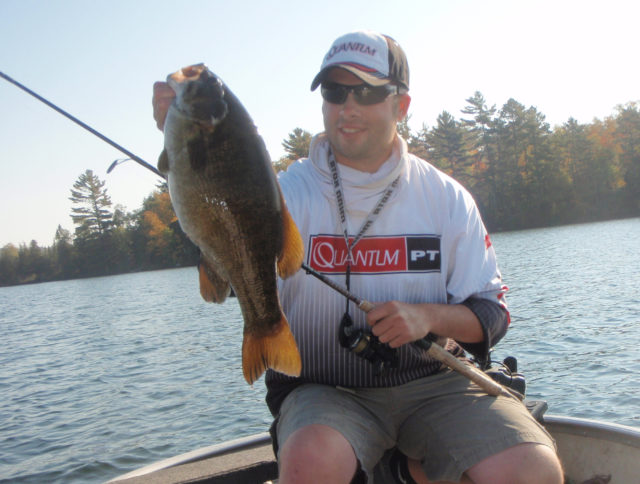
Warming waters and calm sunny fall weather will disrupt fall patterns and timing, but is a benefit to smallmouth and skillful shallow water anglers.
Returning to Shallow Structure
Indian summer scatters smallmouth across a huge range of the lake, forcing us to expand our boundaries, targeting shallow, sometimes deep, and often in between. Majority of the biggest smallmouth will return to the shallows where they will take advantage of the high forage abundance and activity of baitfish and crayfish.
On challenging days, my preference is to float rivers and run and gun through the obstacle courses of flowages. Their darker water and current masks and minimizes any negative effects of high-pressure weather, sunlight, and flat calm days. Rivers and flowages have high fertility and rich habitat, are home to excellent smallmouth populations, and possess some of the best action and numbers fishing anywhere. They are overlooked, reliable big fish producers.
River and flowage smallmouth that haven’t begun migrating to fall staging pools and wintering holes will also scatter throughout the system. River smallmouth are no different than lake fish, favoring the best structure available. They are built for fighting current and will therefore hold along bottom in mid-river hard bottom channel areas with rock and boulders. Since all the river smallmouth fishing I do nowadays is by boat, depths are commonly from 3 to 6 ft.
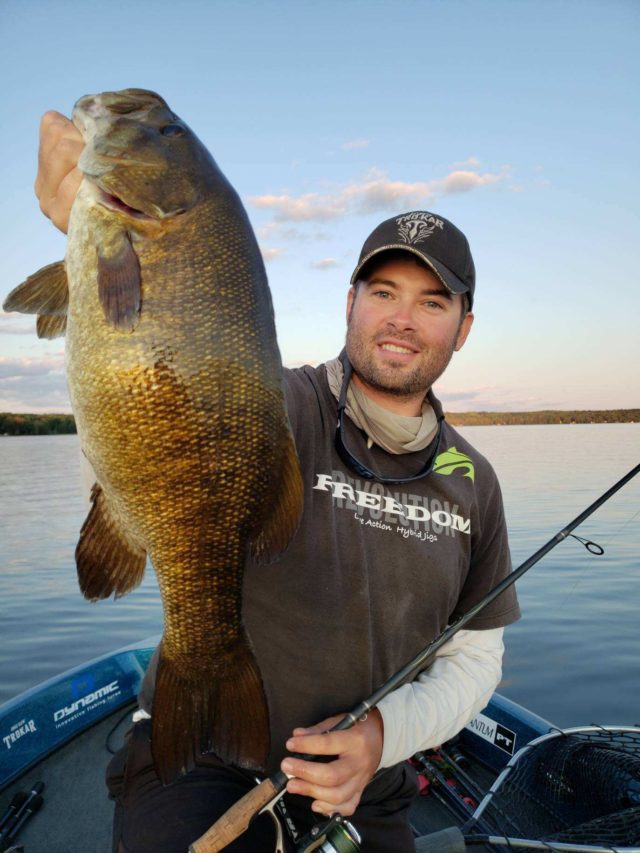
Don’t overlook shallow main lake structures such as isolated humps and rock bars. Big smallmouth like this 21 incher will visit them with high frequency in Indian summer conditions.
Meanwhile on flowages, smallmouth are predominantly rock and weed-related, gravitating to the best shorelines and islands that have these habitats. Wisconsin’s low-land flowages are large, shallow, and expansive, with several miles of shorelines and islands. By September, their water levels are lower, and shorelines become exposed. Keep a keen eye on them and when navigating between spots, because what you see on land will also be along the bottom. A high percentage of shorelines and basins are shallow and featureless in habitat and topography, but isolated areas with the best rock flats and boulders available from shoreline to breakline will steadily hold smallmouth. Beyond shorelines, many flowages encompass several islands, shallow bars, reefs, and flats that are hazardous to navigation. They often contain the best rock structure and habitat. You should be attracted to fish them just like smallmouth are attracted to holding near them.
On natural lakes, the best odds for biggest smallmouth will come from fisheries with big trophy potential but are lower population density waters. On these clear and deep waters with lower catch rates, focus on high percentage shallow structure areas that might hold smallmouth and prey. Smallmouth in these lakes seldom visit the shallows except for spring spawning and this time of year in early fall. Depths of these near-shore regions are commonly 10 ft. and less. Prioritize feeding flats and spot-on-spot locations atop these expansive structures. These spot-on-spot locations can contain the best rock structure in the lake, making them fish magnets. Beyond scoping the shallows, consider shallow mid-lake humps and rock bars. These isolated structures are known to attract and hold trophy smallmouth throughout the year.
Targeting shallow fish is the easiest approach for catching the most and biggest fish. Smallmouth aren’t schooling yet, and many of the shallow fish are single fish and traveling in packs, therefore they’re still much easier to catch than targeting single or rogue fish from deeper water that aren’t yet concentrated in number.
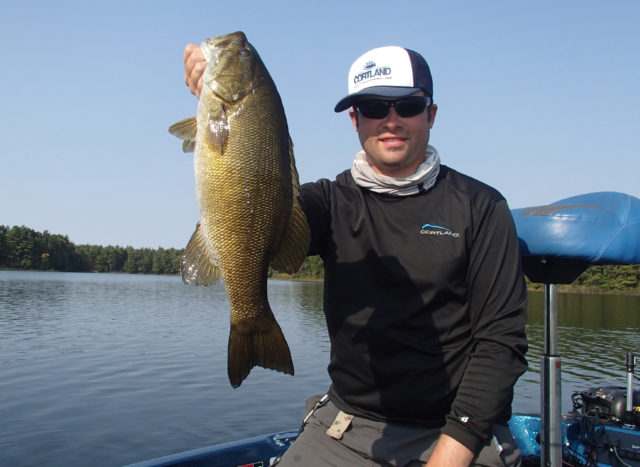
Downsized swimming plastics will connect with big smallmouth when baitfish are prevalent and hyperactive during midday.
Smooth and Smaller
With these calm and warmer than usual conditions, it limits opportunities to power fish and be aggressive like you would in summer. In dead, flat calm conditions, smallmouth have a propensity to disengage and spook. If you can see them, they will see you too. To catch them, you must stalk them. You can get many bites fishing smoothly, and downsizing. Topwaters and soft minnowbaits get the first crack at big fish.
Topwater poppers and walking baits such as the Rapala Skitter-V in hot olive and bone are favorites on the rivers and flowages in their darker water. Walking baits enable me to cover water quickly, to pick off aggressive, cruising fish along shorelines and over the tops of bars. When they’re feeding near surface, topwaters are successful at targeting the biggest smallmouth in the lake. I am not affiliated with Rapala, but endorse the Skitter-V for being a big fish bait.
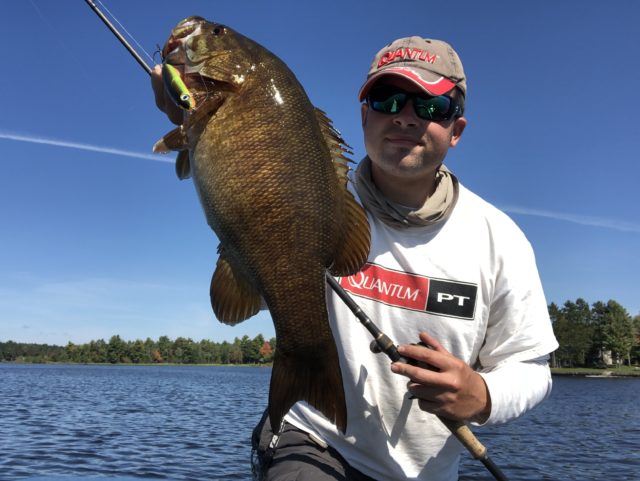
Don’t put the topwater baits away quite yet. Warm, calm, sunny days in late September call for topwaters worked through the shallows and over shallow structure. The biggest fish will react positively in favor of them. This will be the final topwater bite of the year before turnover.
Kalin’s Jerk Minnows and Strike King Caffeine Shads fished in the same manner and situations as topwaters succeed too. Bright, chartreuse colors often attract the curiosity of smallmouth from long distances away. Rigged weightless and Texposed with Trokar TK125 EWG Magworm 3/0 hooks, they can be retrieved sub-surface. The weight of the bait pin enables the bait to glide and sink slowly, enticing lazy fish that hold deeper as well as allowing a longer hang time in the strike zone. Shallow smallmouth will always strike these baits, even in bright, calm, sunny conditions. Whites, pearls, and natural colors for clear transparent water, and chartreuse for dark & stained water. My methodology of fishing weightless minnows incorporates power and finesse in one package, making it a favorite way to fish in calm conditions. Long casts, with an aggressive snapping and jerking retrieve to manipulate the erratic minnow. They can be successfully fished on medium heavy, fast action spinning or casting rods with high-speed Quantum PT reels spooled with 10 lb. fluorocarbon line. In similar fashion, you can succeed too with size 08 and 10 X-Raps in Hot Head.
Beyond covering water and utilizing topwater and jerk minnows as search baits, I like to work structure and along the bottom with jigs once I encounter greater numbers of fish. Remember, this period is also the final shallow water migration of the year for crayfish too, and they’ll be just as active in and around the same shallow structures during the daytime and nighttime, making after dark fishing highly productive too.
Crayfish have molted and peaked in number several weeks prior, but a number of craw imitating jigs are still to be utilized. Strike King Coffee Tubes in Crazy Craw and Magic Goby rigged with 3/16 oz Trokar Weedless Tube jigs are annual producers on lakes. 5” Chompers Hula Grubs in rootbeer green fleck rigged on a 3/8 oz. weedless football heads are winners on rivers and flowages. In deep rock and boulders, finesse football jigs and Jewell Pee-Wee Football jigs rigged with Bizz Baits Killer Craws and Baby Bizz Bugs can do a number.
In lowlight conditions and on rivers, crankbaits will produce too. A craw pattern square bill such as a Bandit 100 or Rapala Crankin Rap 05 is a good option.
Another overlooked presentation is casting a minnow swimmer such as a 5” Kalin’s Lunker Grub, and downsized paddletails rigged on ¼ oz. Freedom Tackle Hydra ultra-lites with plastic rigged on exposed 2/0 Trokar TK180 light wire finesse worm hook. I fish the swimmers on a 7 and a half foot medium fast spinning outfit with size 30 Quantum Energy PT spooled with 15 lb. Cortland Masterbraid with a 3 ft. attachment of 10 lb. Cortland fluorocarbon leader.
Indian summer requires outside of the box strategies and an intricate approach to stealth and smooth power. Fish that are confused about the seasons and warming weather in fall don’t need to be confused any further than they should be by awkward, overdone presentations and crazy rigging methods. Less is more, and simple efficiency produces big fish for my boat daily.
Fall Can Wait
While Indian summer stimulates bass behavior in terms of feeding and location, adverse and brutal daytime conditions can occasionally generate dead periods between bites or shut down fish temporarily. Because of flat calm and sunny conditions, position your boat a great distance away from targets and fish everywhere with stealth, especially on lakes with clear transparency. Fall is returning immediately after this warm spell, therefore anticipate short feeding windows throughout the day.
Outside of spring pre-spawn, there is no other short seasonal window and unique situation like this during the year where big smallmouth bass invade the shallows. Considered a fall season trip deal-breaker to most, I look forward to Indian summer whenever it happens in September and prior to fall turnover. The warm conditions with a hyper-active underwater ecosystem become advantageous for shallow water fishing.
Catch big smallmouth and a nice sun tan. To date, some of our largest ever smallmouth have been boated from Indian summer conditions.
Andrew Ragas splits time between the Chicago area and Wisconsin’s Northwoods. Based in Minocqua, WI, he specializes in trophy bass fishing and offers guided trips from May thru October. While big bass is the passion, he dabbles in multi-species as well. He may be visited online at www.northwoodsbass.com


